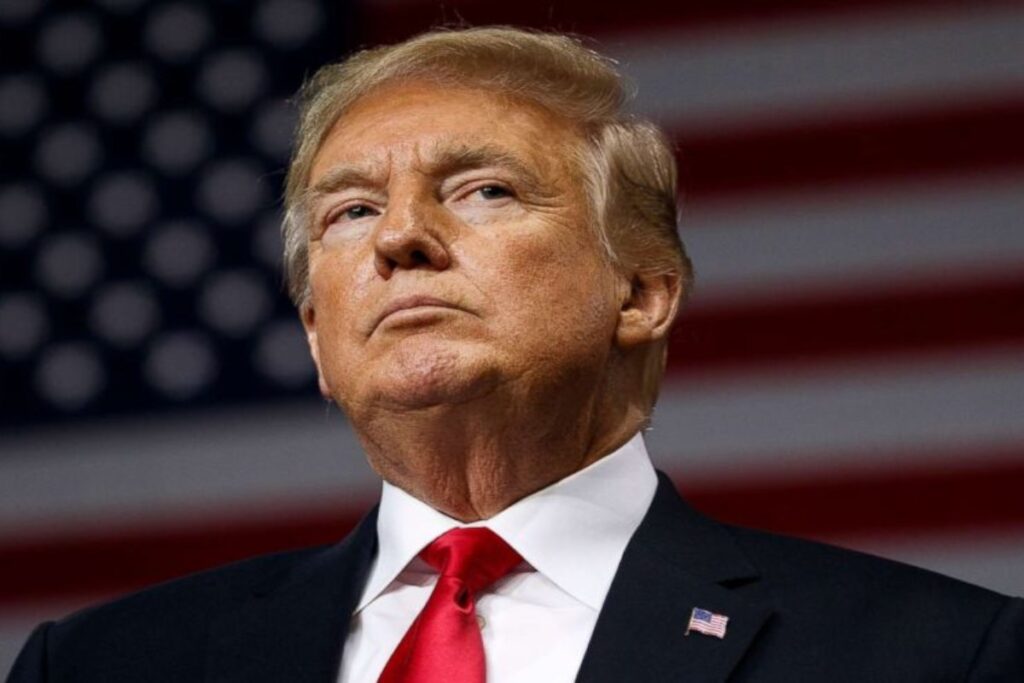President Donald Trump has announced a 100% tariff on foreign movies. This means that all movies “produced in foreign lands” must pay double the present rate to reach the United States market. But this isn’t the first time a nation has imposed tariffs on foreign films.
Other countries have used prohibitive measures to boost local movie production. Let’s examine how film tariffs have evolved over the years.
President Trump shocked Hollywood and the entertainment community when he announced plans to impose a 100% tariff on movies produced outside the United States. The announcement surfaced on the president’s Truth Social page on Sunday, May 4, 2025.
“The Movie industry in America is DYING a very fast death,” President Trump’s post began. “Other countries are offering all sorts of incentives to draw our filmmakers and studios away from the United States,” he complained in the post. Recall that President Trump has touted an “America First” agenda throughout his presidency.

He alleged a conspiracy by other nations to weaken the United States. “This is a concerted effort by other Nations and, therefore, a National Security threat. It is, in addition to everything else, messaging and propaganda!” he further stated.
Since Trump’s second presidency began in 2025, the billionaire business owner has confronted virtually the rest of the world. He has imposed reciprocal tariffs on every country and forced many of them to the negotiation table. These steps are to stop America from getting “ripped off” by other nations.
This tariff on foreign movies is another step in his bid to protect the American economy. “WE WANT MOVIES IN AMERICA, AGAIN!” he concluded his post. Trump said he had directed the Department of Commerce and the United States Trade Representative to begin implementing the plan.
Is Movie Production Dropping in the United States as Trump Has Claimed?
According to numerous surveys, Donald Trump’s claim about the decline in United States film production is correct. A non-profit group based in Los Angeles has revealed that the number of movies filmed in Los Angeles in the past year is down by 30%. It has also declined 40% in the past 10 years.

Over the years, there has indeed been a significant exodus of TV and movie production from the United States. But the reasons aren’t far-fetched. Other countries have lowered their taxes on movie productions, making it super-attractive to host them.
One of these countries is Australia. The country has lured American filmmakers through multiple concessions. For example, Australia offered a 30% tax discount for films produced on their shores.
The policy specifically targeted big-budget movie productions and other local incentives from the state and municipal authorities. Other countries that have lured American filmmakers include Britain, Canada, and New Zealand.
The objective of the Trump tariff is to cancel out these advantages. So, a movie that would have cost $100 million when produced in another country could cost about $200 million when screened in the United States. This will make American producers cancel their trips and plans for foreign filming.

Other Foreign-Film Crackdowns in History
Tariffs are just one way nations have cracked down on foreign filming. Other prohibitive measures have also been used to keep filmmakers from venturing out. Here are some notable examples and their current status.
Britain’s Film Quotas (1927)
The British parliament introduced legislation in 1927 to protect the British film industry from what was perceived as overbearing competition. The Cinematograph Films Act came into effect in 1927 to counter the dominance of the American film industry.
British cinemas began to prefer more Hollywood movies than local content. This trend caught the attention of political leaders, who noticed the decline in jobs for local filmmakers, actors, and movie technicians.
Also, the number of British movies produced began to decrease, leading to a cultural invasion. American culture began to influence and shape the lives of British people, and Parliament saw this as a bad sign.
The Act forced distributors to ensure that at least 7.5% of the films they presented to cinemas were made by a British person or company and shot in Britain. A British person must also write the movie’s original story, and salaries paid to British cast and crew must be at least 75% of the total wages.
The measure achieved mixed results. Even though the legislation secured jobs for many British citizens, promoted British culture, and increased the number of British-made movies, there were some cons.
Movie producers began to sacrifice quality to churn out more movies. Due to their drop in quality, British movies couldn’t penetrate international markets.
China’s Film Quotas (1990s)
China implemented a quota policy for foreign-made movies in the 1990s, similar to the British film quotas. The objective was the same: counter the dominance of foreign films and boost the domestic movie industry.
Chinese authorities also censored foreign movies and forced filmmakers to alter their films in ways that favored the Communist Party’s interests. For example, the 1999 movie Fight Club ended with the authorities, rather than the initial protagonist, having the upper hand.

These measures have resulted in Chinese movies dominating the entertainment space to date. Foreign movie makers eager to have a share of the large Chinese market have had to self-censor their films to gain acceptance.
India’s Taxes and Import Limit (1940s)
India also contributed to the foreign movie crackdowns. For five decades, the Asian giant slapped high tariffs on foreign-made movies and censored those that made it to its screens.
The regulation was a success, from all indications. Bollywood churned out more movies and became the biggest movie-producing country in the world. However, through censorship, it limited the influence and penetration of foreign culture into its society. It wasn’t until the 1990s that its government relaxed these regulations.

France’s Cultural Taxes (1940s)
France also imposed higher taxes on foreign-made films in the 1940s. Its primary targets were cinema tickets and TV broadcasts. This extra revenue was then channeled towards subsidizing French movie production.
France also mandated film quotas. TV stations were directed to air 40% European content, of which most would be French. The aim of this measure was more about cultural promotion than economic advantage.
South Korea’s Screen Quotas (1960s)
In the 1960s, South Korea announced screen quotas to boost local movie production. This special quota focused on airing days rather than the number of movies approved. The country mandated that Korean movies air for at least 146 days yearly.

This measure reduced Hollywood’s dominance on its screens. It also allowed South Korean producers to up their game and present great local alternatives to American movies. Soon, Korean films began to gain wide acceptance.
Canada’s Content Rules (1970s)
Canada, one of the two closest countries to the United States, was most exposed to U.S. cultural dominance through movies. Hollywood gained a foothold in Canada and garnered overwhelming influence. Canada decided to stem the tide.
To achieve this, Canada drafted some content quota rules. Through this regulation, it aimed to recover its cultural independence. It required the Canadian Radio-television and Telecommunications Commission (CRTC) to show at least 50% Canadian movie content.
Hollywood was spared from prohibitive levies. However, American-made films met their match in the government-subsidized Canadian movie industry. Although Hollywood movies are still significant, Canadian movies aren’t far behind in terms of TV. Hollywood enjoys a clear dominance only in cinemas.
What Do the Trump Film Tariffs Mean for the Movie Industry?
Like every other instance of film tariff imposition, it has pros and cons. Donald Trump’s film tariffs will likely bring film production back to the United States and boost the country’s filmmaking numbers.
The measure will also likely increase the number of jobs for the American movie community. However, Trump has yet to specify precisely how the tariffs will be imposed.

Before his inauguration in January 2025, President Trump had appointed some of his Hollywood friends as special envoys to the filmmaking industry. The appointees included Sylvester Stallone, Jon Voight, and Mel Gibson. In a Truth Social post, he disclosed that he will work with them to make the industry “STRONGER THAN EVER BEFORE.”
Regarding the cons, countries that feel targeted could retaliate with their tariffs. If this happens, it will be devastating for American movie producers. Already, government officials are in talks about how to respond to the move.
The tariffs could also kill the enterprise of many freelance movie producers in the UK, said a British entertainment top figure. Even though there could be a rise in American soil movie production, overall, filmmaking numbers could drop significantly.
American filmmakers and other industry professionals are keeping their fingers crossed. Only time will tell if the industry is progressing and if Trump has made the right call.


